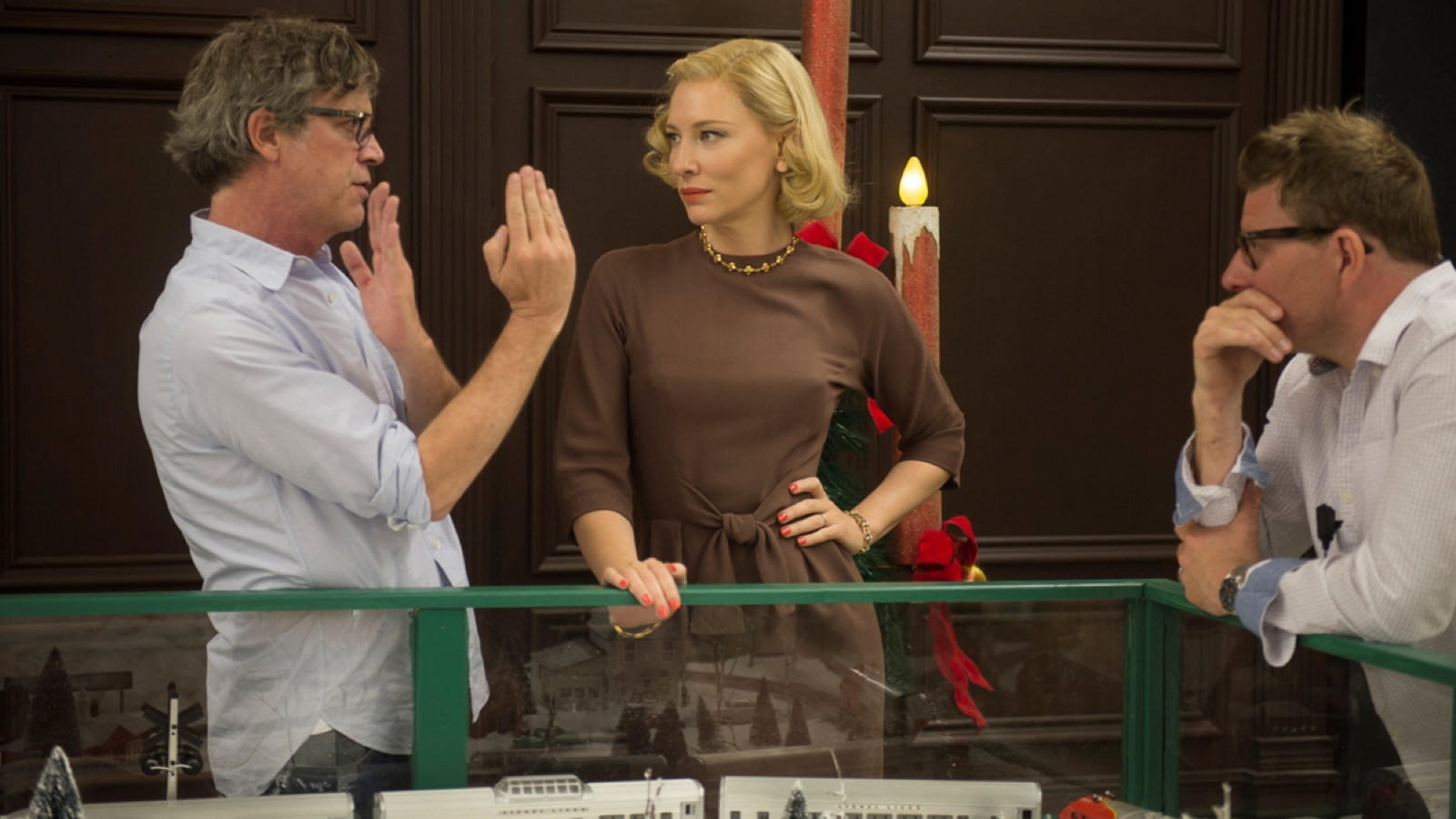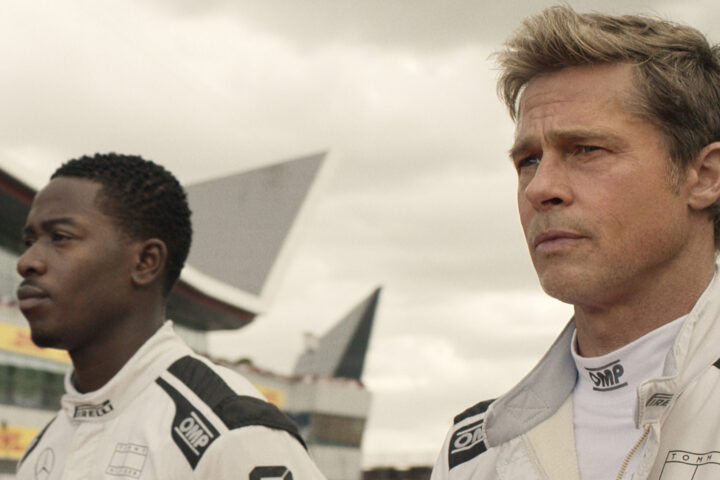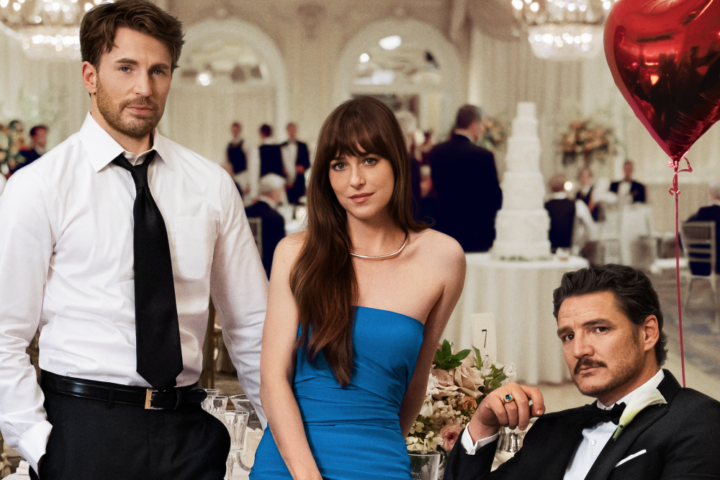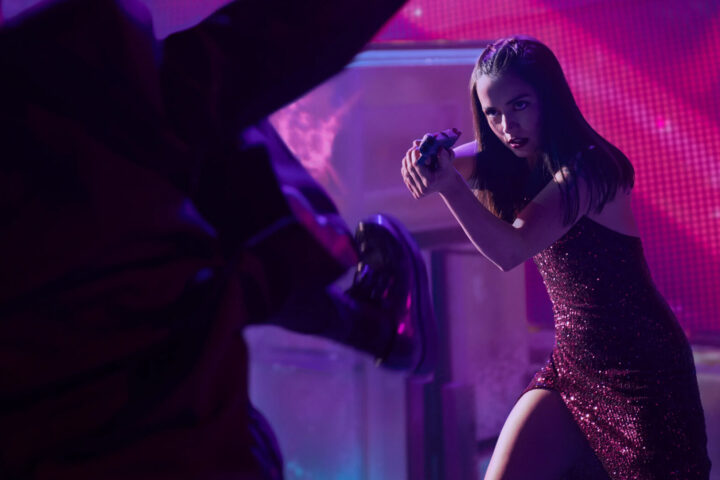Filmmaker Todd Haynes is one of the few contemporary American auteurs, and inarguably the least celebrated. Of that finite club, it may be true that Haynes is the most eclectic, artistic and perhaps even visionary. His low profile should change with his new picture, Carol, a gorgeously evocative, slow burn amour fou between a wealthy New Jersey wife and mother and an aspiring Manhattan photographer and shop girl circa 1950s.
Based on Patricia Highsmith’s novel The Price of Salt, Cate Blanchett is Carol Aird, a picture perfect society matron coming apart beneath her impeccable coif and couture, her lesbian orientation no secret to investment banker husband Kyle Chandler, their marriage in shambles. Enter toyshop clerk Therese Belivet, starting a life in New York City with dreams of photojournalism, as reserved and timid as Carol is glamorous and garrulous. After a brief exchange over a toy train, their fates are sealed.
Their subsequent affair is first chaste, then shattering. Over two engrossing hours, Carol is about many things—clandestine love, class and age, the costs of embracing sexual orientation in an era of social tensions, fears and post-war family traditions, self-actualization. One woman has everything to lose; the other, little.
Fifty-four-year old Haynes, an indie trailblazer in 1991 with his Sundance, art-house smash Poison, went on to write and direct a series of critically lauded, highly pedigreed movies bearing little resemblance to each other than unmistakable boldness in both narrative and technique.
Safe (1995) starred Julianne Moore as a suburban housewife experiencing either a psychological break or the effects of environmental poisoning; Velvet Goldmine (1988) was a flamboyantly experimental musical thesis on sexual fluidity and youth culture in the glam rock scene of David Bowie and Lou Reed; Far From Heaven (2002), like Carol, was set in cloistered 1950s suburbia, and found Haynes alum Moore married to Dennis Quaid’s closeted homosexual while befriending Dennis Haysbert’s gardener against repressed social and sexual mores, told as a beauteous Douglas Sirk-esque throwback; I’m Not There (2007) was an exploration of Bob Dylan’s life and work played in different guises by different actors, and star Blanchett garnered an Oscar nod.
The same is certain to happen with their collaboration on Carol, Haynes’ most mainstream accessible movie, and though certainly not “safe” by any means in its examination of the price of self-acceptance in a very unforgiving time and place, its love story and performances seem destined to capture—or maybe enrapture—his largest audience. As directed by Haynes, Carol is something finely felt and acutely observed. It has also a lusciously rendered central character, courtesy of Blanchett, who owns every scene with typical command, first unraveling then remaking herself in her own truth.
Shot in Cincinnati (which doubled for period Manhattan) by DP Ed Lachman on Super 16mm film rendering the blown up image in a dreamy multitude of grains, and scored by Carter Burwell with forward, evocative intensity, Carol is one of the year’s very best movies.
I caught up with Todd Haynes recently to chat about Carol, Blanchett’s star turn, the blush of falling into first love and being a filmmaker of distinction in an evolving American movie industry.
Why Carol for you, now?
I didn’t elect it—it elected me. I am so lucky it just came to me in 2013 with Cate attached and a script and book that I had never read. People had been working to get this movie made for a long time and I didn’t even know the book. Unlike my other films, this wasn’t something I wrote and developed and myopically forced into being with the help of my producer, Christine Vachon. This was the baby of our very dear friend, Liz Carlson, and it had even preceded her for years. It was kind of a no brainer.
Let’s talk about Cate in this role. In my view, she is at the very top of a rarified echelon of actors. With Cate in a film, there is a mark of quality. In Carol and as always, she is so richly detailed. I’m curious about directing her; she seems to have such a precise idea of how she plays a character. Do you work with that, or just let her have at it? There’s a funny story Woody Allen told about making Blue Jasmine where he just let her go and after two weeks shooting, pulled her aside and reminded her it was a comedy.
The way you describe what she does is really spot on and it’s amazing to me, because she is playing the image of Carol as seen through Therese’s eyes at times, and the real Carol. And she has such a nuanced understanding of when one needs to be, and then when the other does. And we were shooting out of order, rushing and under very difficult circumstances, but both actresses had to shift gears all the time because we really do begin more from Therese’s perspective and end from Carol’s perspective. That was a really delicate balance.
You don’t really mold or sculpt actors. You are more there to create an environment and discussion and series of specific choices with which they work. Like all partnerships that are creative, I think the more specific you are about the style, look, feel and language of the film, the more concrete stuff they have to work with. I think it makes them feel secure in what they do. And then afraid all over again, because they want to do something unique each time and go somewhere they have not gone before. What makes people real artists is when they strip naked each time.
What was great about Carol was that we had two weeks of rehearsal, which I have never had with Cate. It was a time to sit and talk and read over the scenes with both Cate and Rooney, but also to eliminate and reduce the words on the page a bit. But it is all part of this complicated process where everything is informative; the process of finding the right clothes, their shape, the girdles, shoes, stockings, hair, nails. All of those seemingly superficial elements are very specifically informing who these people are.
It’s probably not quite the right word, but your movies have what might be called an auterist stamp on them. Certainly if you look at pictures like Poison, Velvet Goldmine and Far From Heaven, there is a very distinctive aesthetic experience happening in each; they are very exacting in how they look and sound, and your work in Carol with Ed Lachman and Carter Burwell really illustrates this; you are rare amongst contemporary American directors.
Thank you. It is part of the filmmaking that I love because I feel like I learn about these different periods each time I make a film, or about the cinematic traditions that I am exploring or filtering those stories through. So I am learning about film history and social history and popular history, and the music and clothes and manners. All that stuff really matters and in different ways from film to film. In this one, we really were looking at less the movies of the time, but more the actual photojournalism and documentation of the time. And instead of just looking at movies and cinematic traditions, it was more about the love story and how the love story has worked in different movies. To me, the love story was so much about point of view and subjectivity and that meant who was looking at whom, who was on which side of the glass, etc. That is the determining factor in how you enter the story. So that meant all of these surfaces were really meaningful, and these various kinds of windows and frames within frames and musty glass and lenses and car windows…
And raindrops, even.
Yes. The stuff that separates the looker from what they what they are seeing, and stokes the desire to get through it—and see it—became a kind of language that we were really attentive to.
You mention the love story. It isn’t just about a lesbian housewife in the 50s. It is as much about class and age difference. The movie operates on those planes also.
Yes! I think both of those are completely important factors. Because it completely furthers the power difference between the two and the fact that Carol is in a state of holding the cards, in a way, and I think she doesn’t really know exactly what she thinks of Therese. She is attracted to her, but also it is almost like she is creating this little, marginal relationship or fixation as a way of getting her head out of all the enormous issues with her husband, and then she realizes more and more that is greater than just a distraction, and that there is something more meaningful about it. And Therese is this girl who doesn’t have those issues in her life and doesn’t have those demands and complexities.
And is not really looking for anything,
Yes, not really looking for anything and almost doesn’t have any opinions. She says, “I don’t know how to say ‘no’ to anything.” It is almost like she is saying, “I haven’t learned to make choices yet.” That is what we learn when we have experiences and get hurt and develop defenses, and then we find ways of surviving and protecting ourselves, and out of experience saying yes to this and no to that. She doesn’t have that experience yet. So both women go through these really interesting, parallel journeys that are not the same. In fact it pushes them apart, to get to this point at the end where they almost are on much more level ground. And you still don’t know what is going to happen. Certainly it does not end with one of them committing suicide or being committed to a sanitarium.
I’m taking it as a happy ending because after the tension of the film I was very happy to have that look exchanged between them!
Yes! Exhausting! But it is sort of like, “This is where real life starts.”
Carol herself is quite progressive because you wouldn’t even speak of sexual orientation at that time, let alone have any kind of role model to follow. She certainly is very candid with Kyle Chandler’s husband character. Sarah Paulson, who plays Abby, is also very clear and honest. It was daring that Carol was able to embrace herself under such social conditions; very atypical of the world today where people have others, like themselves, to look to.
Except for the butch-femme couple checking Therese out in the record store, Abby is perhaps the most “out” character in the film. But obviously she is a person that loved Carol and one whom Carol did not want to pursue in that way. So it wasn’t the answer for her. Something wasn’t being satisfied in the marriage, the relationship with Abby and the life in New Jersey. There was something missing in her life and she did not know what it was, and didn’t even know it was Therese until after she had rejected her. So it is somebody searching to figure out what they want. Sometimes you don’t know what you want.
I was so intrigued by the long courtship and the glances. And then there is a touch on the shoulder.
I know! It goes on for quite a while…
And it’s not consummated until an hour or more into the film. And we are wondering if they are on the same page, because it’s unspoken.
Right! Let’s see how much of our mainstream audience can hang on. What I love about that is how I remember feeling when I was first falling in love. You just don’t know anything.
You just want more.
You want more. You are also comforted but also completely ill at ease. You want to be with that person and that person only, but even every moment with them is excruciating.
I remember thinking, “What am I supposed to do or say next?”
Oh and then only later do you think of what you should have said! In the book there is a moment where Carol puts her hand on Therese’s shoulder at the piano, and she also gives Therese a little peck, a kiss, on her head. In the book, Therese explains that all she could notice were fingers running across her shoulders and did not even notice the kiss—the thing you most want. But you miss it because you are in a complete state of distraction.
You mentioned a mainstream audience. I think your films are more, and I say this as a compliment, for a specialized audience. Is that a concern?
No, it’s not why I make the films I make. I think so far, in the critical community and festivals, this film has reached more people than my others.
Far from Heaven certainly did also.
Yes, that did. So I think it is more tempering expectations. What I like to do now is go to cities and festivals and do regional press, because I think it encourages people to go to the theater. Like any director, I want people to see the movie in the theater. If it encourages people to do that, then that’s what I want and it is ultimately more important than awards. I just don’t want people to watch it on their phones.
I’d like to talk for a moment about a film I positively love, and that is Velvet Goldmine. I don’t think I can recall another movie that so successfully links youth culture and pop culture, and what it feels like to have a relationship with music as a teen. What are your thoughts on that one, looking back?
We just showed it at the Outfest in Los Angeles, and they had a print and it looked great and they played it really loud…
At maximum volume?
At maximum volume, yes! I just had such a good time watching it. What I am proud about with that one is that it was inspired by youth culture films that came out of the counter culture, as we used to call it, of the late 60s and early 70s, which then gave birth to this specific moment in music history. But those kinds of movies—the Ken Russell and Nicolas Roeg movies—were so important to me as a teenager, that they just blew my mind and made me love movies in a whole other way, and made me want to obsess and talk about them with friends and watch them over and over and analyze. And I feel like Velvet Goldmine really has done that for people. And I feel like, “Yes! That is so satisfying.” To feel that I could have contributed to that really is special and kind of rare.
I met you briefly in 1991 when your breakthrough, Poison, was a big Sundance winner. Remember the National Endowment for the Arts controversy over the homoerotic Genet sequences? We are in a much different world today, I think. But there is also a lack of edge today. Poison would not be made, probably. There seems to be a real lack of radical voices making movies these days.
Yes, in the big sense of course. There is no question. What’s funny when you bring up Velvet Goldmine is that even though we have made progress legislatively and obviously with HIV, which was the crisis that produced a whole lot of films in the late 80s and early 90s, and no one can contest our movement toward assimilation, there has also been a kind of a fixing and normalization. Yet Velvet Goldmine still is unsettling to people because it is about a kind of bisexuality, an in-between, blurry sexuality and gender identity that does not make gay or straight people comfortable. It is too mushy and mixed up. I dig that.
What is the best part about your job?
That’s hard. The creative collaborations—working with actors like Cate Blanchett, Julianne Moore, Rooney Mara, Christian Bale, Heath Ledger, Charlotte Gainsbourg and so many amazing people; working with (composer) Elmer Bernstein before he died. I think just these really extraordinary collaborations I have had with these amazing people. And then having teenage girls—and you—tell me how much you loved Velvet Goldmine…
And me (laughter).
Yes, teenage girls and YOU. That is another great part of my job. You feel like these things are no longer yours. Like kids, they enter the world and stand on their own. Fathering all of these movies is a great part of my ob.
Does the business of movies ever concern you? For example, terrific movies like Steve Jobs, Truth and Suffragette were all losers this season, yet the ones that make money… Well, the box office speaks for itself. Movies are being marketed more and more to VOD, the theater experience is changing.
I hate it. It makes me really upset and worried that we are moving away from that great experience of watching great movies together on film. Film has changed and continues to change. I just don’t like it when we move forward and we discontinue things that cannot be continued again.
Like tossing out all 35mm projectors.
Yes. Changes in behavior are one thing, but I don’t like when the door gets closed for good and you can’t go back. That part is hard. I don’t think we know yet where this whole digital world is leading and I don’t know that it should necessarily replace everything we have done in the past.



